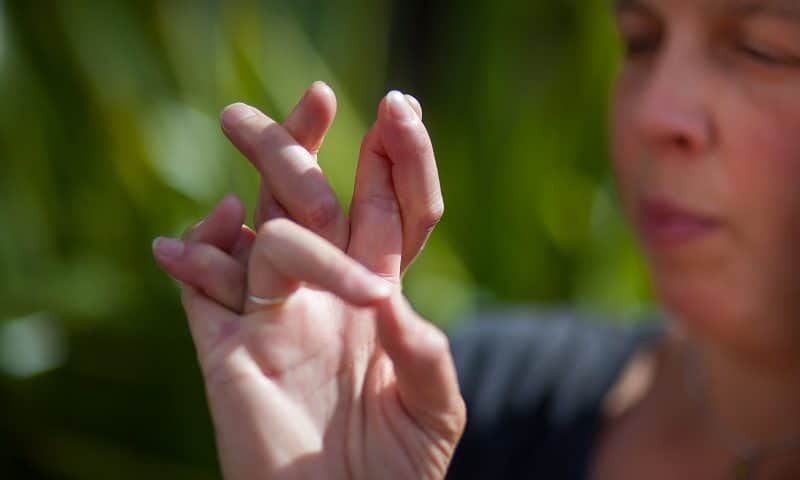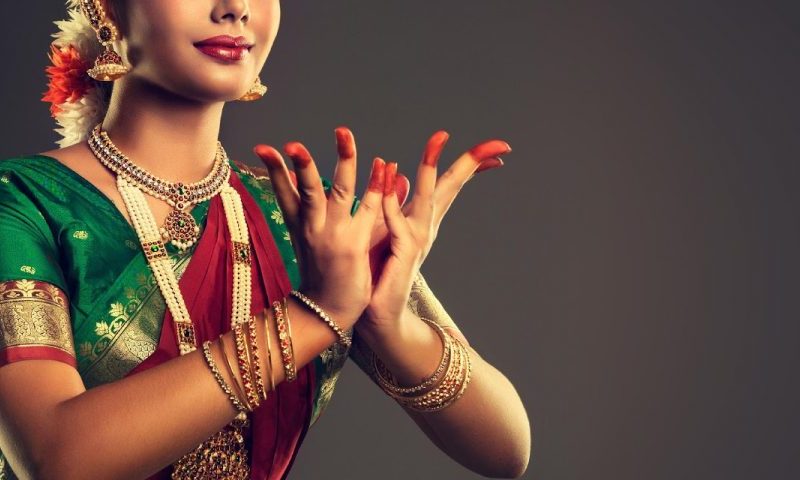Take a look at your hands. Did you know they could do yoga?
No, not just supporting you in Downward Dog, or flailing about in Tree pose!
I’m talking about making ‘poses’ simply with the hands. Combining the fingers and the palms together in a variety of positions which enable health and wellbeing for body and mind. In yoga we call these Mudras.
Scientific research has shown that moving your hands activates different parts of your brain, which is something that has been instinctively understood by people throughout the world for centuries.
Because you actually use Mudra every day!
When did you last wave to someone, put up your thumb, clap, cross your fingers in a gesture of hope…?
These are all Mudras. We use Mudras as communicative gestures across all languages and cultures, in fact we sometimes even use them as a language in themselves, and as part of expressive arts such as dance and puppetry.
So how can you make Mudra part of your yoga practice?
In the yogic tradition the hands are “linked to the heart chakra” and act as “essential energetic antennae” (Swami Saradananda).
They are also “an established component of all religious activities” (Gertrud Herschi).
The word Mudra translates as ‘to bring forth delight’ and that is exactly how they are used in yoga.
Sometimes you will find them as part of the physical asana. Like when you stand in Tadasana (Mountain Pose) with Anjali Mudra (palm press), or the reverse palm press in Parsvottanasana (Charity Pose). In Dru Yoga we have a lovely version of Utkatasana (Chair of the Heart) with the Lotus Mudra (see picture above).
However they are incredibly powerful when you practice them separately to your asana, so that you can focus on the energy that they clear and receive.
Many of the energetic meridians identified in the Indian tradition end in the fingers, which makes the hands an ideal tool for using to bring focus and deliberately affect how the body and mind function.
How the fingers relate to the elements
The relationship of the fingers and the five ‘great elements’ or ‘maha-bhootas’ is key to the practice of Mudra.
Each finger is said to represent one of the ‘great elements’. You can use some very simple Mudra to activate and bring balance to the different elements in your body.
– The THUMB works on the FIRE element, and relates to digestion of food, thoughts, memories and experiences.
– The INDEX FINGER works on the AIR element and relates to breath, circulation and the brightness (or not) of heart and mind. Too much air can make us go really all over the place in our minds!
– The MIDDLE FINGER works on the element of ETHER and relates to our intuition, inner peace and our ability to see beyond limiting beliefs.
– The RING FINGER works on the EARTH element and relates to the joints and bones and our sense of security in life and being able to deal with stress and anxiety.
– The LITTLE FINGER works on the element of WATER and relates to our flow – of blood and fluids and metaphorically in life. If you can’t go with the flow, or let go of something, then you need to increase your water element.
– Finally the PALM OF THE HAND works with the MIND so has overall control of the body and its senses.
How to increase one of these elements
If do you want to bring more fluidity into your life you should touch the tip of your thumb to the tip of your little finger and hold lightly, as if there is a grain of rice between the finger tips.
Watch out for pressing too hard, keep the touch nice and light.
How to decrease one of these elements
If you feel you have too much of an element, say you have too much air in your system then you want to reduce it. Place the thumb over the top of the finger, gently hold it down towards the palm.
How long do you hold them?
Hold for around 3 minutes to start with. You can hold these mudras for up to half an hour though, so they can be used very successfully as part of a meditation practice.
What else can they do?
I think the answer to that is pretty much everything! There are oodles of Mudra for coping with daily life, including ones to help clear the sinuses, to lessen hayfever, to reduce the effects of flying…
They range in complexity and are best learnt directly if possible. I’ll be running a workshop at Lucia Yoga’s May retreat, teaching a beautiful Mudra sequence called the Honouring Yourself Sequence. Book now to join me and two other incredible teachers in May.
If you can’t make the retreat then check out ‘Mudras for Modern Life’ by Swami Saradananda and ‘Mudras: Yoga in Your Hands’ by Gertrud Hirschi for some brilliant guidance on Mudras.
And keep an eye on my You Tube channel as I plan to bring some videos on Mudras out later this year.
All Photos ©Ben Robinson and Lucyoga 2017






2 Comments
Hi Lucia, do you ever come to Australia, or know some one in Australia who also does Mudra Teaching?
JUlie
Hi Julie. I personally don’t go to Australia (currently!) but there is a really strong Dru Yoga community there. I am sure there will be Australian Dru teachers that do teach Mudra.
You can find a Dru teacher near you on this website: https://druyoga.com/au/home
And also do follow my You Tube and social media as I hope to share more of this online.